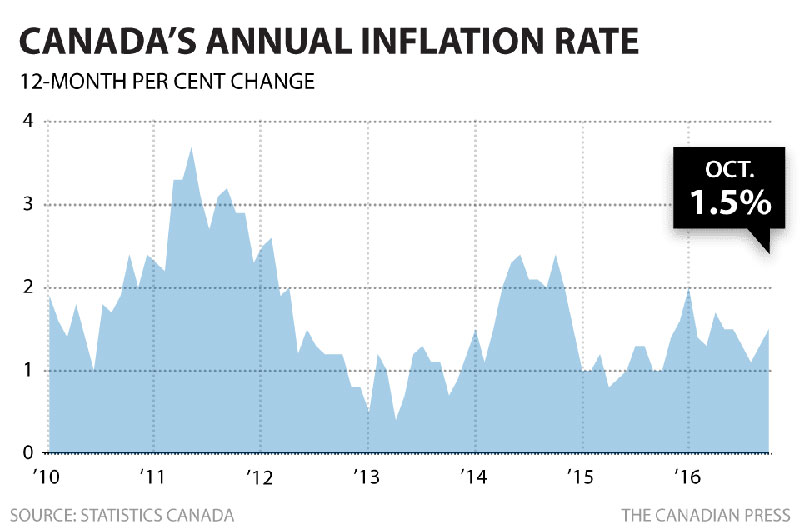
Statistics Canada says the consumer price index in October was up 1.5 per cent compared with a year ago.
That compared with an increase of 1.3 per cent in September.
The October result matched the expectations of economists, according to Thomson Reuters.
Prices were up in six of the eight major components with the transportation and shelter sectors contributing the most to the year-over-year increase, offset in part by lower food prices.

CIBC economist Nick Exarhos noted that gasoline prices were up 2.5 per cent compared with a year ago.
Gasoline prices were a drag on headline inflation for most of the past two years, but have finally turned positive, he wrote in a note to clients.
Excluding gasoline, the consumer price index was up 1.4 per cent compared with a year ago, after posting a 1.5 per cent increase in September.
However, Exarhos said a soft trend in core inflation means the Bank of Canada’s dovish tone is not expected to change.
Although firmer energy prices going forward should continue to push headline inflation higher, underlying trends will remain muted as the output gap continues to weigh, Exarhos wrote.
The Bank of Canada’s core index, which excludes some of the most volatile items, increased 1.7 per cent compared with a year ago.
Economists had expected the core rate to be 1.8 per cent.
The transportation index gained 3.0 per cent compared with a year ago, due to gasoline prices, which posted a 2.5 per cent increase.
Statistics Canada says the shelter index posted its largest increase since January 2015 as it rose 1.9 per cent compared with a year ago.
Compared with a year ago, food prices posted their first drop since January 2000 as they fell 0.7 per cent in October.
Prices for food purchased from stores recorded their largest decline since July 1992 as they fell 2.1 per cent. The prices for food purchased from restaurants gained 2.6 per cent.
